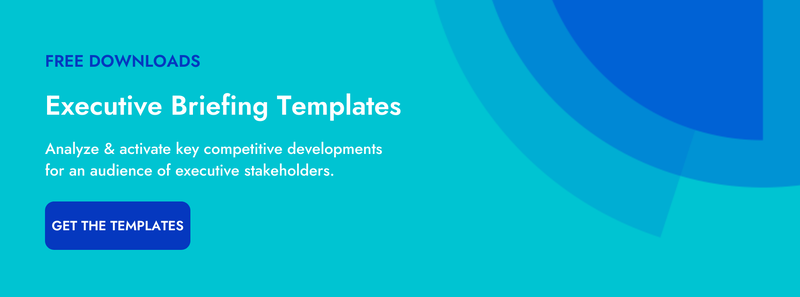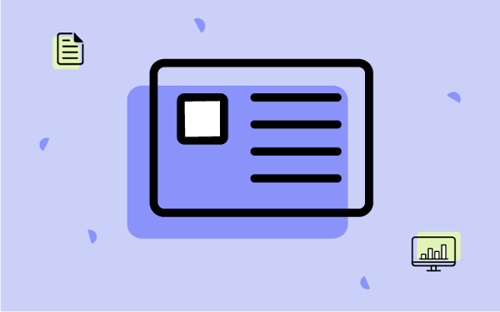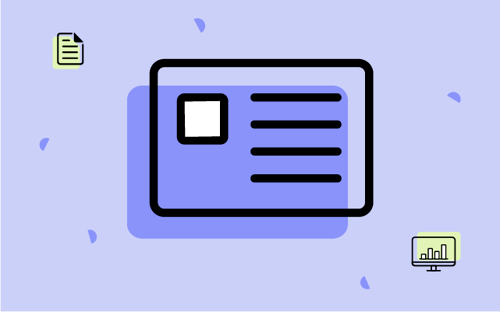Executive leadership makes critical business-directing decisions every day. In order for those decisions to be sound, executives need a clear view of the competitive landscape and how the company will fare in light of market shifts. They want the intelligence - but what’s the best way to deliver it to them? With executive calendars filling up weeks or months in advance, unread emails reaching the 4 or 5 digit mark, how do you get through with the most impactful intelligence in the most impactful way?
Let’s walk through the Who, What, Where, When, and How of delivering impactful competitive insights to executive leadership.
Who: Identify Stakeholders
The first step is to identify who your executive stakeholders are. Every executive leader needs competitive intelligence (CI) to inform their day-to-day, so start broad in terms of areas of the business. However, when thinking about delivering CI to executives, keep your plans to the highest levels of leadership. While other leaders - directors, group leaders, etc. - also need competitive insights, they will need a different level of granularity and should be treated separately.
What: Keep it Relevant, and Verify
Executives have packed schedules and limited attention to spare. To make sure you’re delivering what’s impactful, consider what’s impactful to them specifically. This requires understanding their priorities. Consider their goals, their current initiatives, and the questions on their minds. While speaking with them is the ideal way to uncover this, there are many other avenues to discover this information.
Read through any department documents, presentations from company or department meetings, or speak with members of those departments to get additional insight. This will allow you to tailor what you deliver to each executive, or better yet, focus on the top priorities for the company as a whole to keep the entire executive leadership in sync around what matters most.
Before sharing the insight, make sure to verify your sources. The worst thing you can do is provide an executive with inaccurate information. Providing links to relevant sources in your intelligence deliverable both provides more legitimacy to your alert and offers more research material if your recipient would like to dive deeper. As Crayon customer operations leader Cam Montague suggests, “Back up your competitive insights with evidence. Show the signals that led to the insight, and stick with verifiable information instead of rumors or hearsay.”
Where: Leverage their Preferred Channels
Where do your executives spend their time? How do they prefer to consume information? There’s no universal answer for every executive, so take the time to discover this for your leadership. Some may want an email digest, some may want real-time alerts, some may want a live dashboard they can check at any time. Consider which systems they already use that are specific to the organization: an internal wiki, business intelligence tool, corporate chat, or other platform that executives would frequent already. Leaning into preferred channels gives you a more direct access to that executive.
When: Make it Timely
Aligning the insights delivered with what’s most relevant to executive priorities is key to keeping the content relevant and actionable - but timeliness is equally, if not more, important. If you’re reporting on something that happened weeks or months ago, it is no longer relevant. Either the executive has likely learned about that event already, or the opportunity to take action on it has passed.
While there are longer-term analyses that require tracking multiple events over a period of time, as soon as there is an insight - either from that analysis or from a single recent event, it’s critical to inform executive leadership as soon as possible. This provides the best chance for the company to take relevant actions.
How: Keep it Short and Sweet
As we all know, executive time is not easy to come by, so it’s important to keep competitive deliverables for them short and sweet. Get right to the point: what happened, why does it matter, reference relevant sources, and provide any recommended actions as needed. The longer the email, the less likely they’ll actually read it right away. The wordier the dashboard, the less likely they’ll consume the takeaways.
Crayon customer success manager Max Martin suggests, “The key is to make it easy to consume. In other words, provide one click (if that) access or very clearly point out the importance within the insight(s) being shared. The easier it is for them to access the information, the better.”
Bonus: Get Feedback & Measure Impact
Finally, it’s important to note that once you hit send or publish, the work of a competitive intelligence professional isn’t done. Hopefully, that hard work goes to good use by driving impact across the organization. Be sure to ask for feedback - both positive and negative - in order to continuously improve on your executive deliverables. Having a feedback and engagement mechanism within the deliverable (such as commenting or easy reply) can help get more feedback more often. And measure the impact - both in terms of engagement among the executives (views, comments, etc.) as well as decisions informed by the insights delivered.
Executive leadership is a hungry - but busy - stakeholder of competitive intelligence. To deliver valuable insights to them, you need to understand their priorities and tailor the deliverable to their role, mindset, and day-to-day schedules. But if you do this well, your competitive intelligence work will have a massive impact on the entire organization.

Related Blog Posts
Popular Posts
-
 How to Create a Competitive Matrix (Step-by-Step Guide With Examples + Free Templates)
How to Create a Competitive Matrix (Step-by-Step Guide With Examples + Free Templates)
-
 Sales Battlecards 101: How to Help Your Sellers Leave the Competition In the Dust
Sales Battlecards 101: How to Help Your Sellers Leave the Competition In the Dust
-
 The 8 Free Market Research Tools and Resources You Need to Know
The 8 Free Market Research Tools and Resources You Need to Know
-
 6 Competitive Advantage Examples From the Real World
6 Competitive Advantage Examples From the Real World
-
 How to Measure Product Launch Success: 12 KPIs You Should Be Tracking
How to Measure Product Launch Success: 12 KPIs You Should Be Tracking





